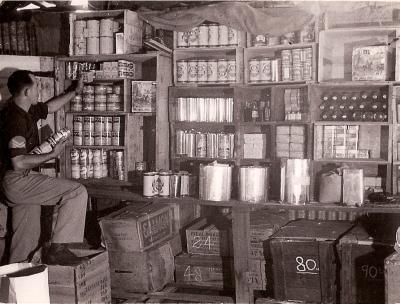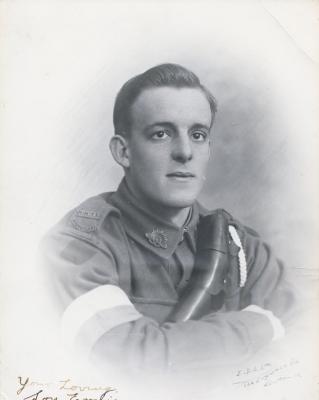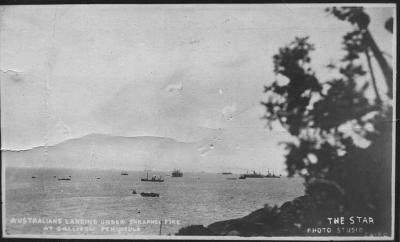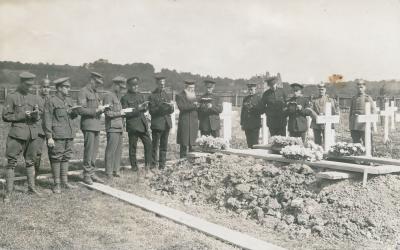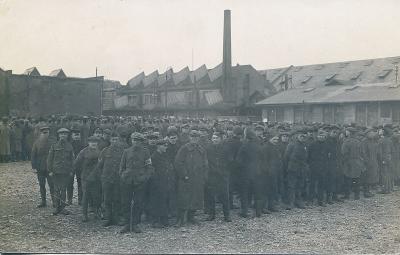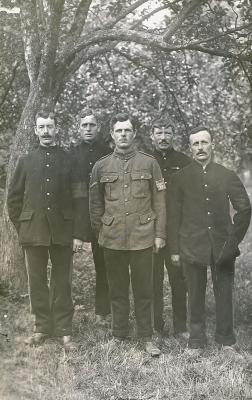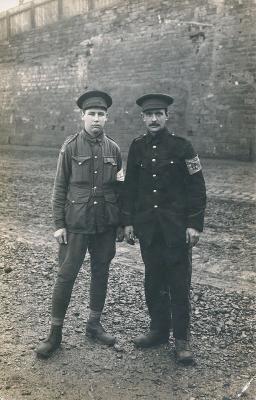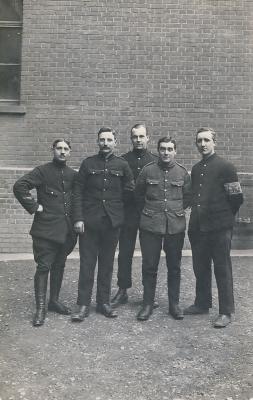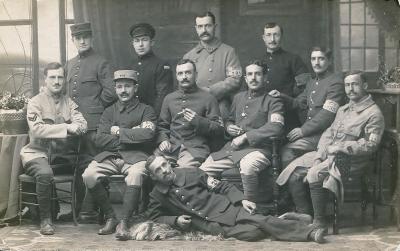World War 2, Australia Western Australia Moora, 1943
1943View of Army supply store and Detail issue Depot at Moora Showgrounds
Aust Army Service Corps (AASC) handled consumable supplies for the Army, ie food, fuel and other consumables, while the Aust Army Ordnance Corps (AAOC) handled any stores that were accountable such as arms, vehicles, equipment and camp stores.
Each Military District had a District Supply Depot (DSD) and later Base Supply Depots (BSD) which received supplies in bulk from suppliers. Advanced Supply Depots (ASD) were established in forward areas and Supply Reserve Depots (SRD) were established to hold reserve stocks of non-perishable items. These were initially manned by detachments from Supply Personnel Companies (SPC) or Sections (SPS). Later the men were absorbed into the depot units and the detachments became Supply Depot Platoons (SDP).
At a location close to any troop concentrations a Detail Issue Depot (DID) was established. They would receive supplies in bulk and break them down to supply each unit mess hall or Q Store with the amount of each item that they were entitled to under the ‘ration scale’.
The ‘ration scale’ itemised the quantity of fresh rations and other consumables that could be issued to the unit per man per day and are designed to provide soldiers with the right amount of nutrient and calories. The depots also carried field ration packs which had a prepackaged balanced diet.
For example the ration scale for butter was 14 g/man/day. The mess at Oliver Hill may have 100 men so their daily allocation was 1.4 kg. Butter could come in 250g tins so 11 tins would be issued every second day. They were supplied to the DID from the BSD in 20 kg cartons (80 tins).
The units did not have to ‘indent’ for rations. They sent the DID their daily ‘ration strength’ and their entitlement was calculated. The ration strength of all units being supplied by the DID was sent to the BSD along with the DID current stockholding of reserve rations and they sent forward enough to meet the issue requirement and maintain an agreed reserve stockholding.
The units would be allocated a resupply day and their allocation would be prepared. The unit driver would report to the DID office, be directed to a loading bay, load his cargo, report back to the DID office and head off to his mess hall.
Ordnance items were managed differently. Each unit was issued with all items listed in their ‘war establishment’ and if any item needed to be replaced, they ordered it from the Base Ordnance Depot (BOD) or Forward Ordnance Depot (FOD) and it was supplied directly to the unit Q Store. Ordnance items would not pass through the DID.
Details
Details
Open in Google Maps
Nearest geotagged records:
- World War 2, Western Australia Moora, Y Detail Issue Depot,1943 (0km away)
- World War 2, Australia Western Australia Moora, 1943 (0.05km away)
- World War 2, Western Australia Moora, Y Detail Issue Depot,1943 (0.05km away)
- World War 1, Australia, Western Australia, 1839 ANNEAR, 10 Light Horse (0.58km away)
- World War 1, Australia, Western Australia, 3531 CLINCH, 10 Light Horse (0.61km away)
- World War 2, Australia Western Australia Moora, BERRY, 1942 (0.69km away)
- World War 1, Australia, Western Australia, 670 WYATT, 10 Light Horse (0.8km away)
Nearby places: View all geotagged records »
Australian Army Museum of Western Australia
Australian Army Museum of Western Australia
Other items from Australian Army Museum of Western Australia
- World War 2, Western Australia Moora, Y Detail Issue Depot,1943
- World War 1, Europe, 1917
- World War 1, Europe, Türkiye, Gallipoli, 1915
- World War 1, Europe, BEATTIE, 1917
- World War 1, Europe, 1917
- World War 1, Europe, 1917
- World War 1, Europe, 1917
- World War 1, Europe, 1917
- World War 1, Europe, 1918
- World War 1, Europe, 1918
- World War 1, Europe, 1918
- World War 1, Europe, Germany, Allied Prisoners of War, 1918
